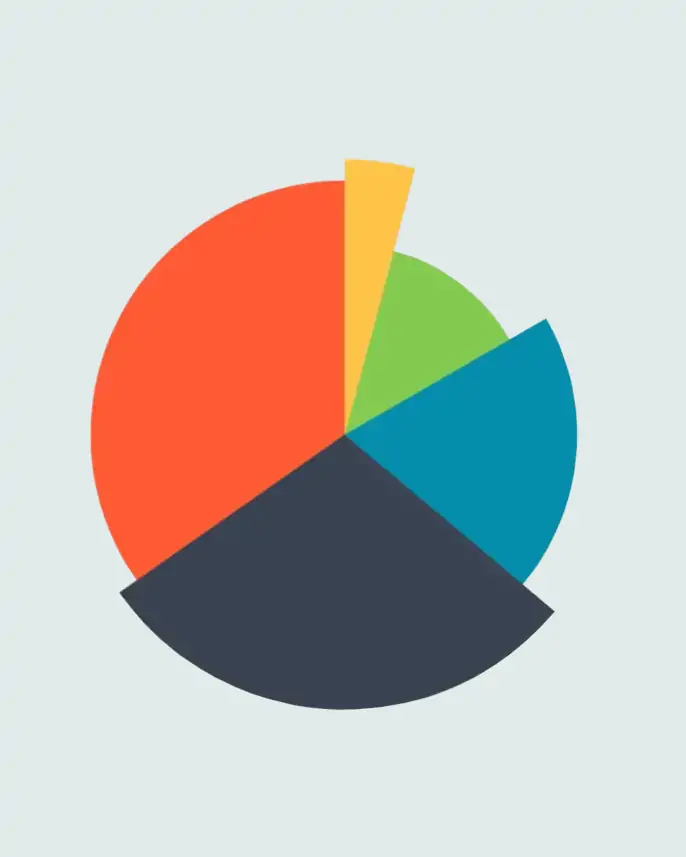Data visualization is an essential tool for presenting information in a clear, concise, and engaging manner. Using SVG, Canvas, and HTML, developers can create interactive and dynamic visualizations that bring data to life. In this article, we will explore the benefits of visualizing data using SVG, Canvas, and HTML, and how it can help make complex information more accessible and understandable, as well as identify patterns and trends that might not be immediately apparent in raw data.
Accessibility and Understandability
One of the primary benefits of data visualization is that it can help make complex information more accessible and understandable to a broader audience. By presenting data in a visual format, it becomes easier to identify trends, patterns, and outliers that might not be immediately apparent in raw data. For example, graphs and charts can help people to visualize trends over time or compare data across different categories.
Identification of Patterns and Trends
Data visualization can help to identify patterns and trends that might not be immediately apparent in raw data. For example, heat maps can be used to display the frequency of events or the distribution of data over a geographic region. Which can help to identify clusters of activity or areas with higher or lower concentrations of data.
Creation of Narrative
Data visualization can help to create a narrative that helps to explain the insights contained within the data. By combining multiple visualizations, developers can create interactive dashboards that allow users to explore data in a more meaningful way. This type of storytelling can help users to understand the meaning behind the data and how it can be used to inform decision-making.
Democratization of Data
Finally, data visualization can help to democratize data by making it accessible to a wider audience. By presenting data in a clear and accessible way. It becomes easier for non-technical people to understand and make use of the information. This can be particularly important in fields like public policy, where data is often used to inform decision-making.
In conclusion, data visualization is a powerful tool that can help to make complex information more accessible and understandable to a wide audience. By using SVG, Canvas, and HTML, developers can create interactive and dynamic visualizations that highlight patterns and trends in data. Whether it’s in business, science, or public policy. Data visualization can help to communicate insights quickly and effectively and empower decision-makers to make more informed choices.
Time-saving
Another benefit of data visualization is that it can save time by presenting information in a condensed and easily digestible format. When working with large datasets, it can be time-consuming to sift through rows and columns of numbers. Data visualization can condense that information into a single image, allowing users to quickly identify trends and insights.
Communication of Data
Data visualization can also improve communication of data within an organization or between teams. By presenting data in a visual format. It becomes easier to communicate the information to others and ensure that everyone is on the same page. This can be particularly important in collaborative projects where multiple stakeholders need to be kept informed.
Predictive Analysis
Data visualization can also help with predictive analysis by identifying patterns and trends in data that can be used to make predictions about future events. By analyzing historical data and visualizing it. Developers can identify trends and patterns that can be used to make predictions about future events. This can be particularly useful in fields like finance, where predicting market trends is critical.
Data-driven Decision-making
Data visualization can empower decision-makers to make informed and data-driven decisions. By presenting data in a clear and accessible way, decision-makers can quickly identify trends and insights that can inform their decisions. This can be particularly important in fields like healthcare, where data can be used to inform treatment decisions.
Conclusion
In conclusion, data visualization using SVG, Canvas, and HTML can help make complex information more accessible and understandable. It can identify patterns and trends that might not be immediately apparent in raw data, save time, improve communication of data, enable predictive analysis, and drive data-driven decision-making. Data visualization can be used in various fields, including healthcare, finance, public policy, and more, to empower decision-makers to make more informed choices.
